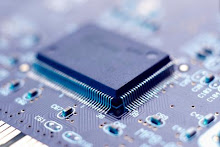Have DDR3 prices finally hit rock bottom? DDR3-1600 reached $30 per 2 GB module several weeks ago, making it completely competitive in price-per-performance with DDR2. Available in both dual-channel and triple-channel kits for $60 and $90, these aren't last year’s high-voltage parts, but instead completely modern 1.50-1.65 V modules, fully compatible with Core i7, Phenom II socket AM3, and future Core i5 platforms.

But those were June's prices, and several of the modules that qualified for our “sub-$100 triple-channel roundup” have since gone up to as much as $130. Meanwhile, prices for the DDR2 that still competes for attention in AM2+ and LGA 775 platforms have remained relatively flat. A few of today’s contenders haven’t yet been hit by the higher cost bug, but we see it as only a matter of time before the cheapest models get more expensive or the more expensive models get cheaper. Either move will result in all six sets once again settling into the same price class.
Today’s comparison is about value, so the products lagging behind the upward pricing trend have a distinct advantage no matter how long it lasts. With daily updates logistically difficult, tomorrow’s readers should instead find our test data far more useful than any value conclusions when using future prices.
Value for us is defined by how much performance we can extract from a part, rather than how much it’s specified to provide. Overclocking and under-latency test results are thus more significant to us than rated settings, yet some people refuse to overclock by a greater amount than specified by the module manufacturer. Here’s a short list of how today’s samples are marketed.
The only company to rate its part at standard voltage, Crucial’s higher-latency DDR3 can be viewed as the only parts in today’s lineup that don’t require overclocking techniques to reach rated speed and timings. Our overclocking tests will be the equalizer, since we apply the same voltage limit to every set.
Before we move on to overclock testing and value assessment, let’s take a closer look at each product in today’s comparison.









